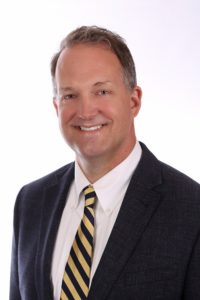

Please join us for the first of a three-part webinar series on Direct Primary Care . External Link. Opens in new window.featuring Dr. Kayur Patel, Chief Medical Officer at Proactive MD. External Link. Opens in new window., and Dr. David Usher, M.D. at ReforMedicine. External Link. Opens in new window.. HRCI Credits have been approved and other CE Credits have been applied for.
Dr. Patel will discuss how and why health care doesn’t have the systems in place for integrated health, and what we can do to provide real, quality care to patients by utilizing incentives. He’ll also provide an overview on Direct Primary Care – what it is and how it works.
In addition to talking about how he’s approached health care during the pandemic, Dr. Usher will discuss his background as a Family Practice Physician and chair of the Family Medicine Department in a large system and how that experience influenced him in 2011 to found a Direct Primary Care Practice focused on affordable high-value health primary care.
In part two of this series (June 25th, 11:00am) you’ll hear from employers on why and how they got involved in Direct Primary Care – including their internal processes and success stories related to opening an on-site or shared-site clinic.
If you attended this webinar you know that Direct Primary Care is a very hot topic. There were a lot more questions asked than our experts could answer in a single virtual session, so we took the time to compile those questions and ask our speakers to answer them so we could share them with our stakeholders. Here they are:
We’re building a clinic in conjunction with a few other area employers, and we are in a rural area. Can DPC staffing work with a Nurse Practitioner (NP) or a Physician’s Assistant (PA) as the lead at the clinic?
Do you handle more than primary care?
Is The Alliance Clinic staffed by Physicians?
Do most of your Employers in DPC models cover only those in their plan, or do they cover their entire employee population? Is making it free critical for maximizing utilization?
Do you offer MRIs? How do you recommend where patients go to receive MRIs?
How do you approach to handling Rx? Both potentially treat package medications and specialty drugs?
How do you capture avoidance of needing a surgery by improving primary care?

Chief Medical Officer at Proactive MD
Dr. Patel continues to disrupt the healthcare industry with his unique views on Standard of Care vs Right Care. He currently serves as the Chief Medical Officer of Proactive MD. External Link. Opens in new window., a company laser-focused on delivering the Right care to all their patients. In this role, Dr. Patel’s mission is to improve methodology to engage administrators, clinicians, and patients in a culture of zero tolerance for gaps in healthcare.
Dr. Patel also serves as consultant to Acentra Health. External Link. Opens in new window., formerly KEPRO, the Quality Improvement Organization for over 30 states, wherein he reviews care delivered for standard of care. His prior roles include: Chief Medical Officer of an HCA hospital, Senior Vice President of TeamHealth. External Link. Opens in new window., Board Member of the Indiana Rural Health Association. External Link. Opens in new window..

M.D. at ReforMedicine
Dr. Usher founded ReforMedicine. External Link. Opens in new window., a low-overhead family medical and medical weight loss practice that is affordable to many more people, especially those with high deductible health insurance plans, or no third-party payor coverage. Working under a purely private medical model, Dr. Usher can innovate and offer to patients and employers creative solutions which larger clinics are slower to adopt.
As former Medical Director of Weight Management Services for Mayo Clinic. External Link. Opens in new window. in Eau Claire, Wisconsin, he provided medical oversight to a Very Low Calorie Diet program using nutritional products and programming, assisted in the recruitment and orientation of providers to monitor patients, and helped streamline and make more cost-effective protocols for patient care.
He is a member of the American Academy of Family Physicians. External Link. Opens in new window. as well as the Obesity Medicine Association. External Link. Opens in new window.. He is a diplomate of both the American Board of Family Medicine. External Link. Opens in new window. as well as the American Board of Obesity Medicine. External Link. Opens in new window..